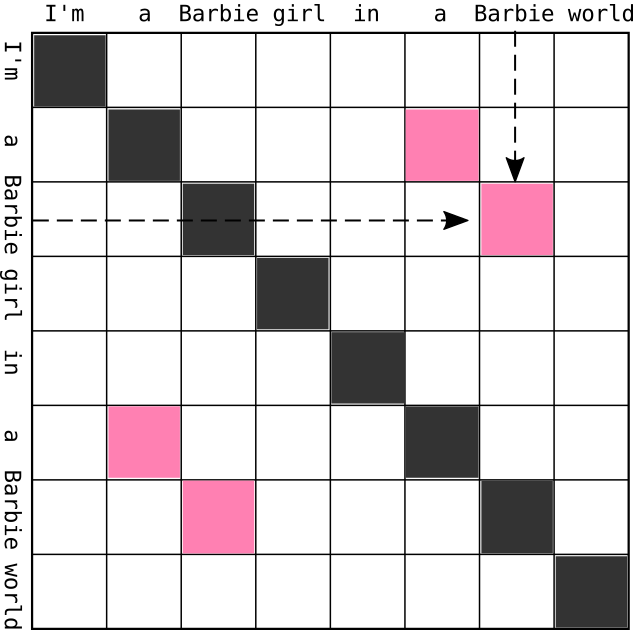I discovered Song Sim this year (2017), and I think it opened my eyes to how computer science and computer graphics can be useful to discover various nuances or patterns within human language.

 Barbie Girl
Barbie Girl
 Psycho Killer
Psycho Killer
This short documentary follows three professionals who work with generative art. Art can be a very generic term and this PBS documentary chose to satisfy this ambiguity by interviewing three very different types of artists.
The first artist is a musician, the second a choreographer of generative computer art, and the last a video game artist.
Each of the artists look at the various information and determine the best ways to transcend its current form. Last century we built the infrastructure to get electricity almost anywhere in the world, and this century we will be able to use this foundation to communicate data instantaneously.
The most important aspects of a generative art is that it is reliable and reusable.
Each artist writes an algorithm to produce their art as the intended. One individual describes his goal to be to mimic life in digital form. I interpret this as, reproducing the patterns in nature in a consistent way. Generative art isn’t ever going to work as intended the first time it’s tried because it’s a process that evolves over time.
Casey Reas is working with Vice and Intel to capture the beauty of using software to capture patterns that are found naturally, with ones that are constructed.
His skills require a knowledge of both art and math in order to create the beautiful images. This documentary provides insight to what current research is being done in the brand new computer generated art.
Linguistics in the modern age has an advantage on its predecessors due to the “big data” which is widely available for use. I think linguistics is a growing field with many potential areas for research.
Suppose that there is a word in a given text that is used “most often”, it follows, there is also a second "most often" used word, and so on.
From the Zipf Mystery a strange pattern emerges: The second most common word will appear ½ as often as the most common word. The third most common word will appear ⅓ as often.
The third most common word will be found ⅓ often, and so on. This indicates that there is an inversely proportional relationship between word usage and its rank. Meaning: Word Usage = (1/rank) follows the power law.
(The rictor scale follows the power law as well - 2.0 earthquakes are 10x stronger than a 1.0)
House A, written by Jennifer Cheng poetically captures how human beings are both creators and explorers. The following quote is a beautiful example of Jennifer Cheng's ability to describe how our human identity shapes the way we experience the world.
we build a house to locate ourselves; a
body lay in the house, a body lay slant in
the house.
say the word nest and they thought i
meant child.
inside the house, i look for smaller
houses.
structural beams of the kitchen table,
canopy of wounded quilts. jar for the
shell, jar for the birds, jar for the dry
hibisicus.
anthropology of house: a is for the space
between two slopes. the [weathering] of
the roof against outside [weather].
angle is the particular incline to reflect a
particular view. as in: here is the
baseline, here is the position along
which you traveled.
weather. the shape of the atmosphere.
the side from which the wind is
blowing.
extracts: house, body, architecture.
F
"not in the thing itself but in the
patterns of shadows": an after-effect
that splinters over everything.
we moved upward inside the
observatory shaped like a lighthouse, in
order to peer through a telescope at
blurred light.
